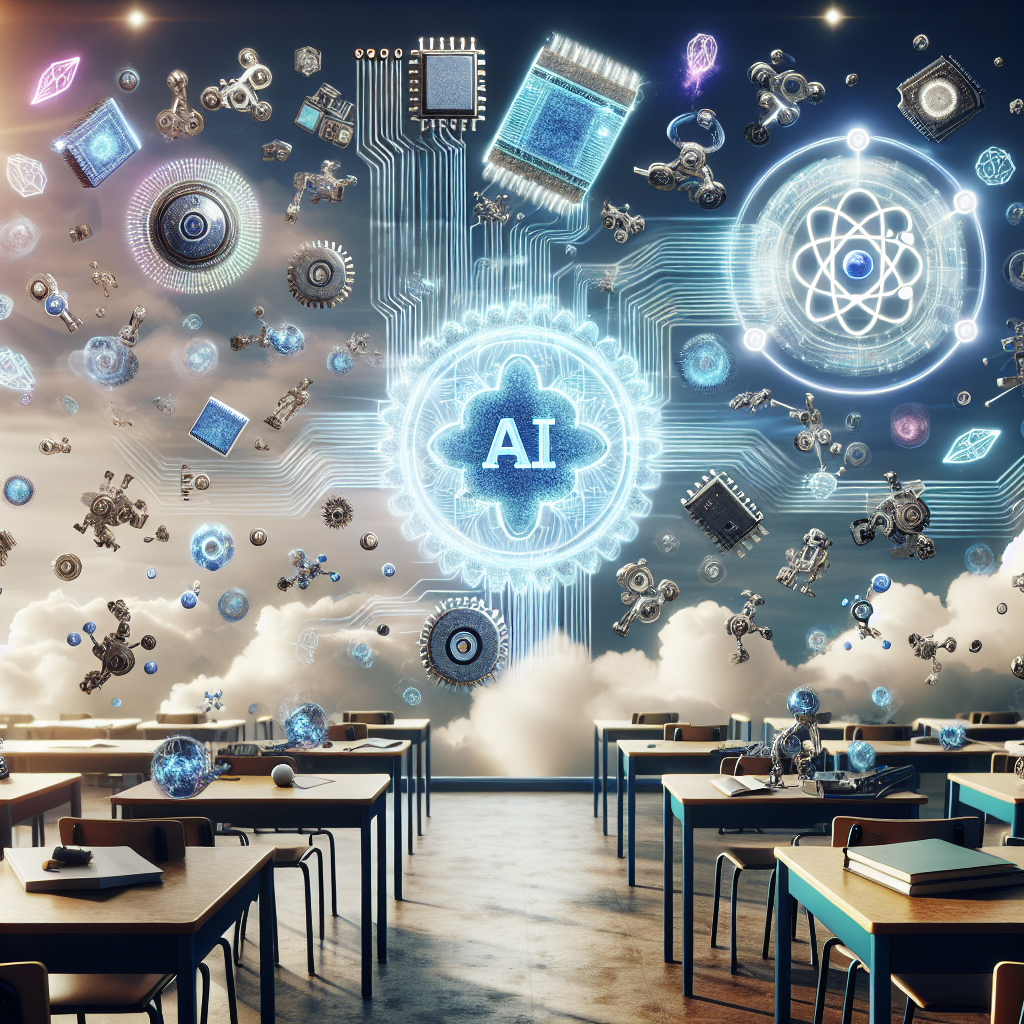Artificial Intelligence (AI) and STEM education are two fields that are becoming increasingly intertwined in today’s world. STEM education, which stands for science, technology, engineering, and mathematics, is focused on preparing students for careers in these fields. AI, on the other hand, is a branch of computer science that deals with the creation of intelligent machines that can think and learn like humans. When these two fields come together, they create a powerful combination that can revolutionize the way we teach and learn.
One of the key ways in which AI is transforming STEM education is through personalized learning. AI algorithms can analyze data on how individual students learn and tailor their education to meet their specific needs. This can help students who are struggling in certain areas to get the extra help they need, while also allowing advanced students to progress at their own pace. By personalizing the learning experience, AI can help to ensure that all students are able to reach their full potential.
Another way in which AI is impacting STEM education is through the use of virtual reality and augmented reality. These technologies can create immersive learning experiences that allow students to explore complex scientific concepts in a hands-on way. For example, students can use virtual reality to simulate a chemistry experiment or explore the surface of Mars. By bringing these concepts to life in a virtual environment, AI can help to make STEM education more engaging and interactive for students.
AI can also play a role in providing real-time feedback to students. By analyzing data on how students are performing on assignments and assessments, AI algorithms can provide instant feedback on their progress. This can help students to identify areas where they need to improve and make adjustments to their learning approach. By providing immediate feedback, AI can help to accelerate the learning process and ensure that students are able to master STEM concepts more quickly.
In addition to these benefits, AI can also help to address some of the challenges facing STEM education. For example, there is a shortage of qualified STEM teachers in many schools, particularly in rural and underserved areas. AI can help to fill this gap by providing online tutoring and support to students who may not have access to a qualified teacher. By leveraging AI technology, schools can ensure that all students have access to high-quality STEM education, regardless of their location.
There are also concerns about equity and access in STEM education, particularly for underrepresented groups such as women and minorities. AI can help to address these disparities by providing personalized learning experiences that are tailored to the individual needs of each student. By removing barriers to learning and providing support to students who may face additional challenges, AI can help to level the playing field in STEM education and ensure that all students have the opportunity to succeed.
Overall, the combination of AI and STEM education has the potential to revolutionize the way we teach and learn. By personalizing the learning experience, providing immersive learning opportunities, and offering real-time feedback, AI can help to make STEM education more engaging, interactive, and effective. As we continue to explore the possibilities of AI in education, we can expect to see even more innovative uses of this technology to support STEM learning.
FAQs:
Q: How can AI be used to personalize the learning experience for students in STEM education?
A: AI algorithms can analyze data on how individual students learn and tailor their education to meet their specific needs. This can help students who are struggling in certain areas to get the extra help they need, while also allowing advanced students to progress at their own pace.
Q: What role does virtual reality and augmented reality play in STEM education?
A: Virtual reality and augmented reality can create immersive learning experiences that allow students to explore complex scientific concepts in a hands-on way. This can help to make STEM education more engaging and interactive for students.
Q: How does AI provide real-time feedback to students in STEM education?
A: AI algorithms can analyze data on how students are performing on assignments and assessments and provide instant feedback on their progress. This can help students to identify areas where they need to improve and make adjustments to their learning approach.
Q: How can AI help to address the challenges facing STEM education, such as teacher shortages and equity issues?
A: AI can help to fill the gap in qualified STEM teachers by providing online tutoring and support to students who may not have access to a qualified teacher. AI can also provide personalized learning experiences that are tailored to the individual needs of each student, helping to address equity issues in STEM education.

